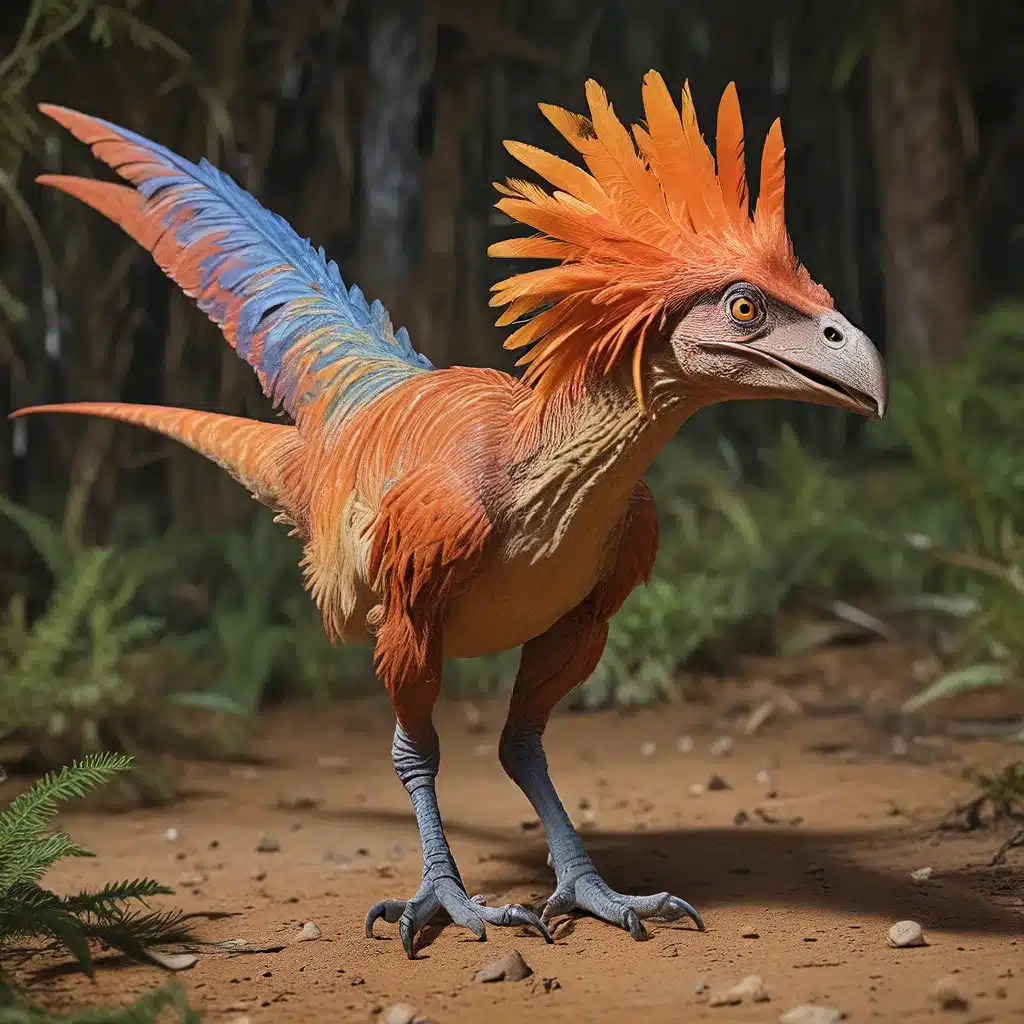
Unraveling the Mysteries of Feather Evolution
The evolution of feathers from reptilian scales is one of the most profound yet poorly understood events in the history of vertebrates. The discovery of the Psittacosaurus, a plant-eating dinosaur from the Jehol Biota of China, has shed new light on this evolutionary enigma.
Fossil experts from University College Cork in Ireland recently captured stunning images of the Psittacosaurus skin, revealing a fascinating and perplexing discovery. The dinosaur’s belly showed patches of skin that glowed orange under UV light, suggesting the presence of specialized skin structures. However, the top of the Psittacosaurus’ tail had long fibers that many researchers assume were feather-like bristles.
Researchers suggest that since this dinosaur had two types of skin, perhaps the evolutionary ancestors of today’s birds had a similar combination of scaly and feather-like skin. But do these fossils truly help solve the riddle of feather evolution?
The Silica-Preserved Dinosaur Skin
The Psittacosaurus specimen was unique in that silica seems to have directly replaced bits of its skin. This rare preservation technique, similar to the process that formed the Petrified Forest National Park, allowed researchers to study the dinosaur’s skin in unprecedented detail.
According to the study published in Nature Communications, the team from University College Cork and Nanjing University in China found that some of the dinosaur’s skin had reptilian scales, complete with dark structures called melanosomes. However, the researchers could not find any evidence of the supposed feather-making skin or follicles that would have been necessary for the development of feathers.
The researchers stated that it is “reasonable to presume” the dinosaur’s tail fibers were feather-like, despite the lack of clear evidence. This assumption highlights the ongoing challenges in understanding the evolutionary transition from scales to feathers.
The Scaly and Smooth Skin Conundrum
The Psittacosaurus fossil’s details have sparked a heated debate among paleontologists and evolutionary biologists. On one hand, the evidence of reptilian-like scales on the dinosaur’s body is clear. But the supposed feather-like structures on the tail remain a mystery.
Some evolutionists have even expressed doubt about whether the tail fibers were indeed feather-like bristles or simply remnants of the dinosaur’s skin. The absence of clear evidence for feather-making skin and follicles in the Psittacosaurus fossil casts doubt on the idea that this dinosaur was a transitional form between scales and feathers.
As Dr. Brian Thomas, a research scientist at the Institute for Creation Research, points out, “Either it had no undisputed feathers like dinosaurs or it had fully formed feathers like some fossil birds show.” The Psittacosaurus fossil, while intriguing, may not provide the definitive evidence needed to unlock the evolutionary enigmas of the feathered dinosaurs.
Feather Evolution: A Profound Transition
The evolution of feathers from reptilian scales would have required a remarkable series of genetic and developmental changes. New sets of building instructions would have been necessary to construct the feather follicle, shoulder aside the scaly skin building programs, and develop specialized cells to manufacture and export keratin, the main feather-building material.
These cells would then need precise instructions on how to deposit the keratin in the exact shape, size, length, and direction, starting from the tip of the feather and ending at the base. The complexity of this process is one of the reasons why the evolution of feathers remains poorly understood, as no clear evidence of this transition has been observed in the fossil record or in present-day organisms.
The Search for Evolutionary Clues
Despite the challenges, researchers continue to search for clues that could shed light on the evolutionary origins of feathers. The analysis of feather structure and function has emerged as a promising avenue of investigation, as seen in the recent study published in PNAS.
This study, led by paleontologist Jingmai O’Connor from the Field Museum of Natural History, examined the wing feathers of 346 bird species worldwide. The researchers discovered a consistent pattern in the number of primary feathers, ranging from 9 to 11, across diverse flying bird species. This finding suggests that flight likely evolved only once in dinosaurs, with subsequent diversification leading to various outcomes, including some lineages becoming flightless.
By applying these newfound feather rules to fossil specimens, the researchers were able to identify ancestral bird species that were likely capable of flight, such as Archaeopteryx and Microraptor. Conversely, species like Caudipteryx, despite possessing the correct number of primary feathers, exhibited symmetrical features incompatible with flight, indicating a loss of flight capability over time.
The Enduring Enigmas of Feathered Dinosaurs
The ongoing research on the Psittacosaurus fossil and the analysis of feather structure and function in dinosaur ancestors have provided valuable insights into the evolution of feathers. However, significant gaps in the fossil record and the complexity of the evolutionary process continue to pose challenges in fully understanding this remarkable transition.
As Jingmai O’Connor explains, “While this research provides valuable insights into the origins of flight, we acknowledge that gaps in the fossil record hinder a comprehensive understanding of wing evolution.” The search for more definitive evidence and the continued exploration of ancient dinosaur fossils will be crucial in unlocking the evolutionary enigmas of the feathered dinosaurs.
As you explore the mysteries of the past on The Lost Kingdoms, you’ll discover the fascinating stories of ancient civilizations and the enduring questions that continue to captivate scholars and enthusiasts alike. Join us on this journey through time as we unravel the secrets of our shared history.


